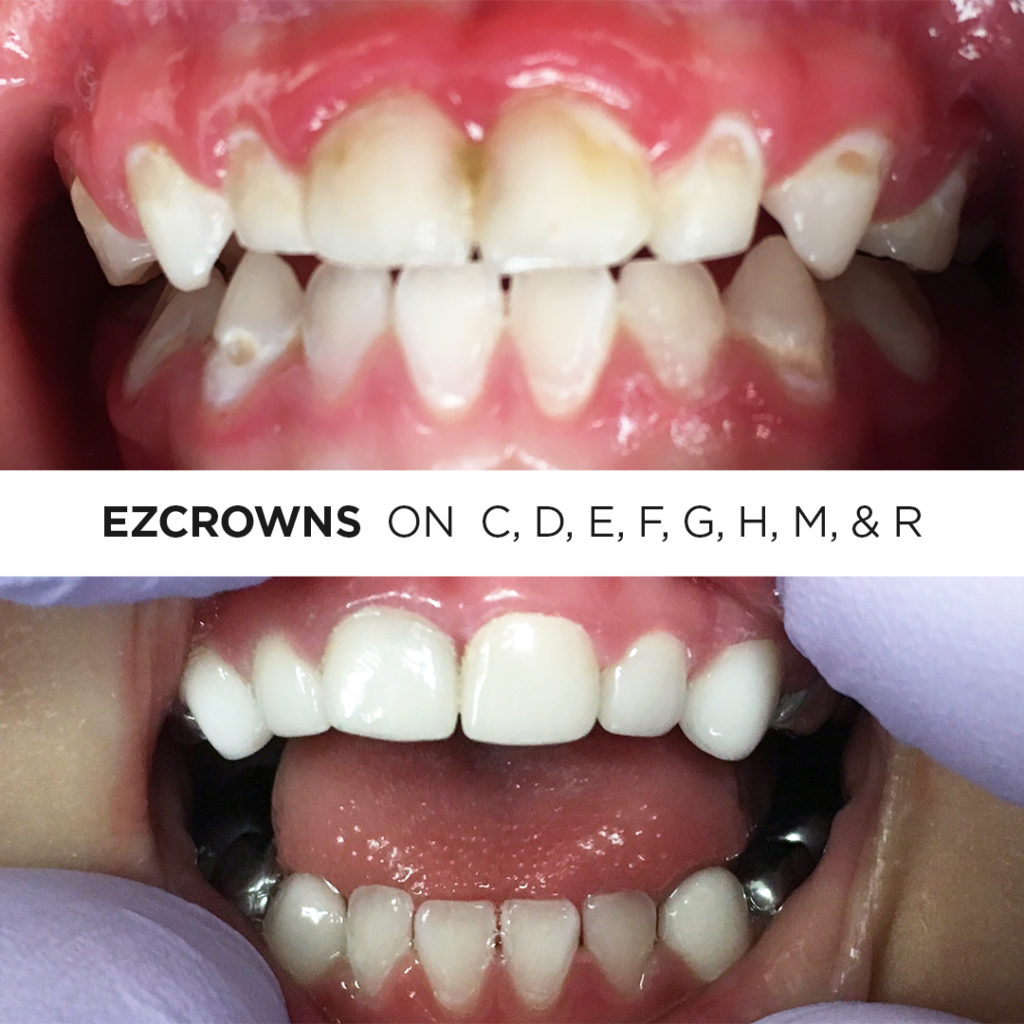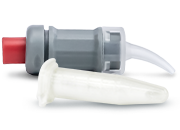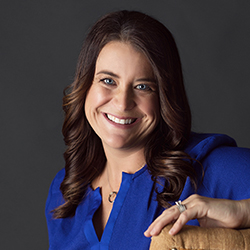
After being in private practice seven years, I found myself often in a reflective mood asking the question, “Why?” Why pediatric dentistry? Why Zirconia crowns? I also started posing this question to attendees at Sprig University courses where I lecture. I think this question is an important one each of us should ask ourselves if we expect to continue to grow and become successful in our careers.
Following four long years in dental school and two even longer years in residency training, we are all eager to start working. By the time we have invested that much time and expended that much effort, earning money and making our mark professionally are the activities that initially grab our attention.
However, once in daily practice, we then quickly begin to realize that pediatric dentistry is indeed hard work, confronting us with challenging situations. We face exhausting behavior management issues, the unrealistic expectations of demanding parents, and the stresses of building a practice, and the need to foster office morale, hoping employees will love our practice just as much as we do. We also provide the same routine five procedures (sealants, fillings, crowns, pulp therapy, extractions) day in and day out.
I’ve heard way too many colleagues after only a few short years of practice share their frustration, saying, “I’m burned out.” Well, I became determined not to let that happen to me. So, I started taking a serious internal inventory and asking myself the central important question, “What will my response be to the ‘why’ question?” Eventually, I arrived at the following conclusions.
Why pediatric dentistry?
I discovered my answer—because I want to connect with people. I want to get to know them and understand why they chose me to care for their children’s teeth and overall oral health. When we make meaningful connections with people, we become a part of their medical team. They trust us to educate them about the best available treatment options and then provide the best care possible.
We develop a team approach which carefully coordinates the parents’ wishes and needs, the child’s best interest, and our skills and expertise. Our emphasis is no longer focused simply on fixing a cavity, but on providing patient-centered care. I find that parents are much more willing to trust me and accept my treatment recommendations when they feel that they are respected, listened to, and play a valued role in developing an overall philosophy of care.
If you don’t make these personal connections with the parents of your patients, then your practice easily lapses into a daily routine of just “drilling and filling.” And when that happens, we may be tempted to dwell on discouraging doubts and mull over feelings of burnout.
Why Zirconia crowns?

For me it’s about how our products and services will improve the lives of the children we treat. As professionals, we instinctively understand why a baby tooth needs a crown. But this need isn’t always easily understood by parents. Once we convince them a tooth needs a crown, we then traditionally had to tell them it would be silver and might not look quite like a natural tooth. We are all fully aware that a silver tooth isn’t any worse esthetically than the decayed tooth they had been looking at for months. But we could never say that.
Parents today want the best of the best for their children. They want them to have beautiful white teeth so no one will judge them as parents for allowing their child to develop cavities or make fun of their child for having silver teeth. They want for their child what every human being wants deep in their core—to be accepted. I learned this very quickly when I started offering Zirconia crowns. The most common comments I would hear from parents during follow-up visits were these: “Thank you for making my child’s teeth look so natural,” or “Thank you for making the tooth look the same as before.”
It comes as no surprise when parents’ initial questions about the crowns are always, “Will the teeth look like chiclets?” or “Will the crowns look too white and not match natural teeth?” Parents ask these questions because that is what the crowns we used to use looked like! Since switching exclusively to Zirconia crowns in 2010, I can confidently tell them, “No! These crowns will look exactly like a natural tooth!”
Every parent wants this result for their child. They will seek out a dentist that is willing and able to provide that kind of service, and we are the lucky ones who get to provide care that will change their lives for the better.
Kenzie personalizes the “Why?” question.

One patient and her mom have helped me realize the answer to my “Why?” question. Kenzie and her mom, Amy, came to my office for a new patient consult in 2015. Kenzie is an adopted child from China who has been diagnosed with Sjorgren Larsson Syndrome, an unknown brain injury, epilepsy, poor muscle tone requiring a wheelchair, and other special healthcare needs.
One patient and her mom have helped me realize the answer to my “Why?” question. Kenzie and her mom, Amy, came to my office for a new patient consult in 2015. Kenzie is an adopted child from China who has been diagnosed with Sjorgren Larsson Syndrome, an unknown brain injury, epilepsy, poor muscle tone requiring a wheelchair, and other special healthcare needs. Amy knew that Kenzie had decay on her front teeth, but treatment had been put on the back burner, given all her other medical conditions.
At first, Amy was hesitant to approve extensive treatment or general anesthesia, so I attempted slow-speed excavation and glass-ionomer restorations to buy us some time. Those restorations lasted about a year. About that same time, Amy noticed spontaneous gingival bleeding occurring and worried that Kenzie still was not eating much textured food by mouth. She came to me seeking advice and was now ready for more definitive treatment to be done, if needed. Kenzie received several medical consults, and most of her doctors recommended extractions of her teeth to eliminate the decay. She was referred to a children’s hospital where they recommended either full-mouth stainless steel crowns or extractions.
Amy was not happy with these options. Kenzie may not be able to talk, but her mom knew that her daughter—always happy and smiling—definitely communicates with her beautiful smile. What would pulling her teeth or replacing them with silver crowns do to that special smile?
Thoughts from Kenzie’s mother, Amy.
Although I’m not great with words, whenever I share with others regarding Kenzie, my adopted daughter from China, I speak from the heart.
We were over-the-moon happy with Dr. Andi’s suggestion of using Zirconia crowns for Kenzie’s dental work. My daughter has such a magnetic smile that it can light up a room, and Dr. Andi was determined to preserve Kenzie’s trademark smile.
Because of Kenzie’s syndrome, we see many medical specialists. As our dentist, Dr. Andi also plays an important role on the healthcare team that treats our girl. Dr. Andi keeps up-to-date on all Kenzie’s ongoing treatments and required procedures. I think special-needs kiddo’s mouths often get overlooked with all the other therapies they receive and specialty appointments they must keep, but Dr. Andi doesn’t allow that to happen.
These special-needs kids deserve all the dignity that every other child deserves, and Dr. Andi sees to it that they receive the same kind of respect. She treated Kenzie just like she would any other child and didn’t treat her differently just because of her special healthcare needs.
Since Kenzie is not able to speak for herself, we are so grateful to have Dr. Andi using her expertise to be our daughter’s voice, advocating on her behalf regarding her dental health needs. Thank you, Dr. Andi, for preserving Kenzie’s beautiful, magnetic smile. After all, we know that it’s her smile that makes our Kenzie, Kenzie.
Thoughts from Dr. Andi, a mother and dentist.
My concern, as Kenzie’s dentist, was how the spontaneous gingival bleeding would respond to stainless steel. In my experience, the gingival response to Zirconia crowns is superior to any other restoration we place in a child’s mouth. I offered to place Zirconia crowns for Kenzie, if we could get her medical team to approve the treatment. After having several conversations, they did approve for Kenzie to receive general anesthesia at our local hospital so we could seat Zirconia crowns, canine to canine, and place stainless steel crowns in the posterior.
Kenzie did great during the surgery and shortly thereafter began to eat by mouth again. Every time I see her, she is smiling ear to ear. Although she still has occasional bleeding in the posterior where the stainless-steel crowns were placed, I find it no surprise that the gingiva in the anterior looks fantastic with no inflammation or spontaneous bleeding.
The bottom line is that we can’t forget there is a “human” side to every dental procedure we do.
Her medical team has commented several times on how amazing Kenzie’s Zirconia crowns look and that they wish we would have used Zirconia in the posterior after seeing how well the gingiva responded. They now readily recommend Zirconia crowns for their patients with special healthcare needs who require dental work.
When I ask Amy about her own feelings throughout this experience, she always responds with gratitude, saying, “You treated Kenzie like any other child and didn’t treat her differently just because of her special healthcare needs.” And during each visit since the surgery, Amy doesn’t miss an opportunity to say, “Thank you for preserving Kenzie’s smile, because her smile is what makes Kenzie, Kenzie.”
The bottom line requires that we must never forget the reality that every dental procedure we do has a “human side” to it, involving a little boy or girl who talks, eats, and smiles every day. And each patient has parents who don’t want their child to be viewed as different. They want us as pediatric dentists to join with them as a member of their child’s healthcare team. These parents want to connect with us and know that we care about them and their children just as if they were our own.
It’s amazing how rewarding providing patient- centered care can be when you stop worrying about whether insurance will cover the cost of treatment you know is best and which uses options such as silver diamine fluoride, space maintainers, interceptive orthodontics, oral sedation, or Zirconia crowns. It makes a difference if you truly believe that the treatment you are providing meets the gold standard of care and is the best option for your patient. And if you speak from your heart and establish a connection with the child’s parents, then you will have no problem convincing them of the value of such treatment.
So, why do I do what I do day in and day out? What makes me truly happy and satisfied in my job and throughout every aspect of my life? It’s this, knowing that I put a little love into every patient I see and every last crown I place. I challenge each of you, new graduates and experienced pediatric dentists alike, to do the same. Ask yourself “Why?” And then search for the answers—the things that make you wake up in the morning and want to come to work, the things that make you love your job, the things that make your patients and parents love you, and the things that make you truly happy. I challenge you to do this without considering money as your motivator.
Go each day and discover anew what motivates you in response to the “Why?” questions. If we all do this, I have no doubt we will advance the pediatric dentistry profession, live a satisfied life, and better the world we live in.


